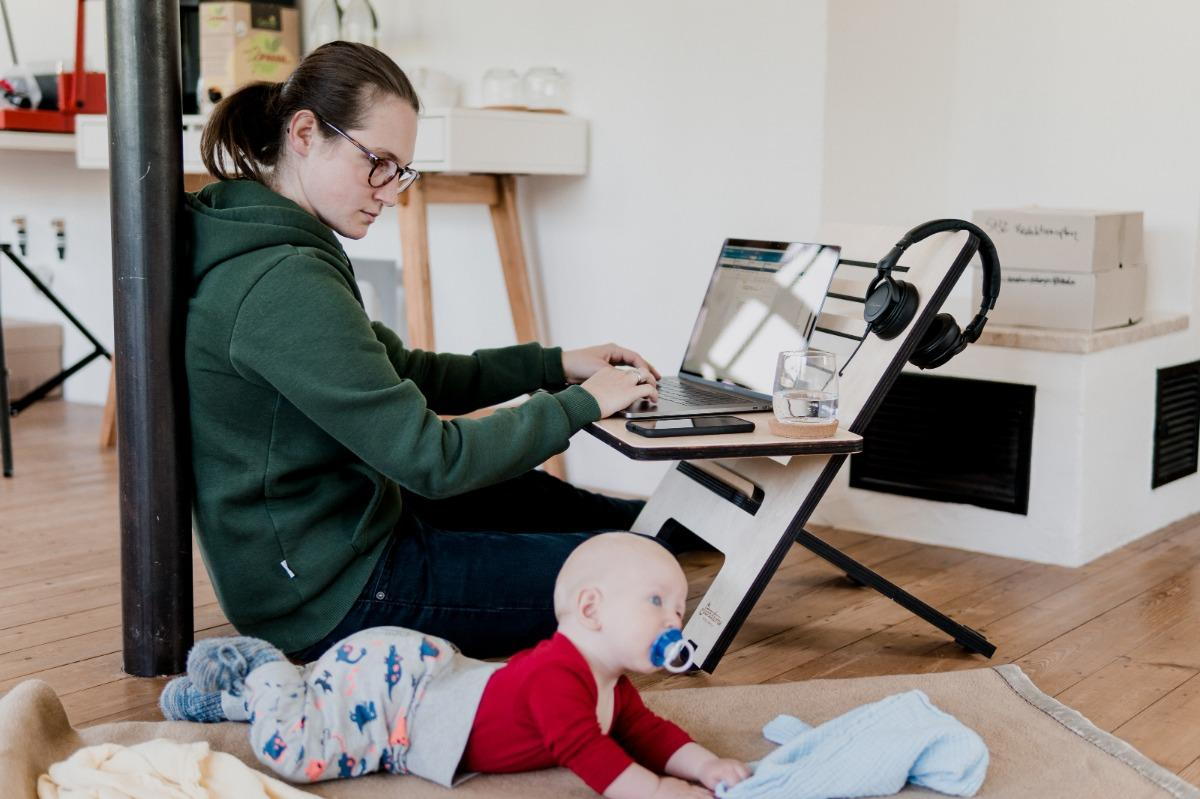
Thanks to COVID-19, many more of us have found ourselves working from home. Like, 1 in 6 of us, and that number is increasing by the day. Working from a homemade workspace in place of your properly outfitted offices, many of us are noticing new aches and pains that we weren’t feeling before.
One of the reasons we are feeling more of those pains is that, while it’s not required, many companies followed ANSI-HFS standards when it came to the design of workstations, furniture, and accessories, and you probably aren’t doing that at home.
You may not have the space for that ergonomic office furniture, and more importantly, you may not have the cash readily available to invest in it. You may be sitting at the kitchen table, countertop, couch, or even in bed, while you work from home. Odds are, you are not keeping a healthy posture in any of those places.
If you’re feeling the pain of your home office, you may be on the road to some serious musculoskeletal injuries. Back, neck, and shoulder issues are on the top of that list. Also, carpal tunnel syndrome, and deep vein thrombosis (a condition that can cause blood clots to form in the veins that are deep in your body), can also become problems.
That’s probably enough information to make you want to start seeking some solutions. The first thing you’ll want to do is begin spending as much time as possible working in what is known as “neutral posture”, which is a position in which no part of your body is awkwardly twisted or bent. If you’re working on a computer, this means you’ll have to pay attention to a few details.
When you are working on your computer, be sure you are viewing it with a straight neck. Don’t look down when looking at your screen, this includes your phone and your laptop. You also want to make sure screens aren’t at an angle that makes your twist your neck to view. If you put your mouse and keyboard right in front of you, and your screen off to the side, you are twisting your neck and creating pain from all that swiveling. If your screen is separate from your laptop, elevate it on a stack of books, or box, to help raise it to a height that is straight in front of you.
Even though you might think you’re helping yourself by resting your wrists on a soft, or squishy rest, is not a good thing. A soft wrist rest adds to the compression inflicted on finger flexor tendons, and also on the median nerve. This can increase the risks of carpal tunnel syndrome. And, while we are trying to give those hands and wrists a break, consider switching to voice recognition in place of texting or sending those emails. This will give your hands, wrists, and arms a much-needed rest.
When you are sitting, be sure you aren’t hunched forward, turtle-like. It may surprise you, but sitting upright isn’t much better than hunching. The best position is when your lower back curves slightly toward your belly. This position is called lordosis and is the most relaxed position for your lower back. It also puts the least pressure on the discs in that area. Leaning forward allows the lumbar spine to bend out, which is called kyphosis, and that puts too much pressure on your lumbar discs. Be sure to sit back in your chair enough to allow some body weight to be supported by the chair. If your chair lacks proper back support, roll up a town and place it behind your lower back to add some support.
The last detail you’ll want to be aware of is keeping your feet flat on the floor, or on foot support. Should your feet not reach the floor, grab a box, pile of magazines or books, or cushion to put your feet on. Dangling feet puts pressure under your thighs which restricts the blood flow to the lower legs and feet. This can increase the risk of deep vein thrombosis.
Who knows how much longer we are going to be logging work hours at home? It makes sense to make a few tweaks to your home office setup, and be sure you are setting yourself up the right way.
With most people working from home because of COVID-19, it is very important to get in good habits to avoid back pain. Dr. Leto Chiropractic in Key West can help you with all the information you need and with your back or neck adjustments. Darold Leto Chiropractic is one of the best doctors in Key West to help with your back and neck pain along with physical therapy. Visit today for more information and make an appointment now!
